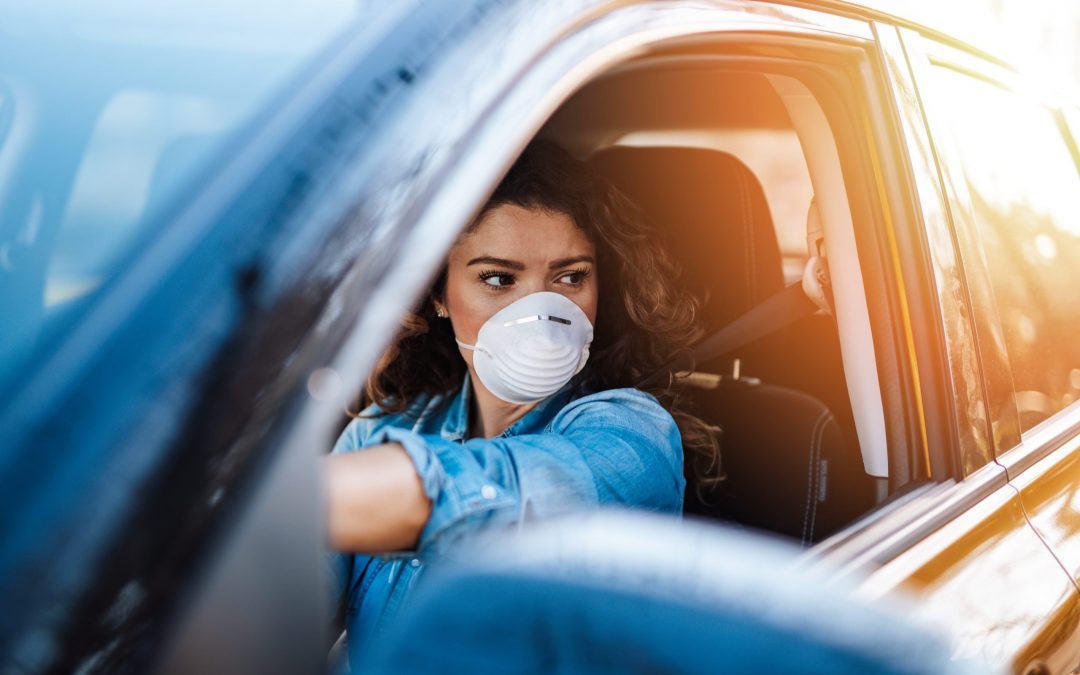Since the outbreak of the pandemic, the topic of “occupational safety” has become even more important and comprehensive: In Corona times, it is no longer just a matter of preventing accidents, but above all of minimizing the risk of infection. And the way to work must not be ignored. To offer their employees the greatest possible safety, companies should use targeted measures to control the journey to the place of work. This can also pay off in the post-corona period.
Employers in Germany have a statutory duty of protection and care towards their employees – this results from §3 of the Occupational Safety and Health Act. They must avert any health hazards from their employees to the best of their ability. Therefore, companies would do well these days to establish a company infection protection concept that minimizes the risk of infection with the COVID-19 virus. This concept should also consider the journey to the place of work.
Responsibility instead of a legal obligation
How can we provide our employees with a safe journey? Companies should ask themselves this question. They are not legally obliged to do so: How the employee gets to work is basically up to him – according to § 615 of the German Civil Code (BGB), he bears the risks associated with the journey. For example, if an employee is dependent on public transport, he or she must accept the risk of infection on buses and trains. However, it is of course in the interest of every company to keep the risk of infection for employees low throughout the entire working day, including travel to and from work. After all, in the event of an outbreak of the disease in the company with subsequent quarantine, it would be no consolation to know that the reason is to be found in the employees’ travel route.
Use of public transport: risky in times of crisis
Employees who have always traveled to work by bicycle or on foot may of course continue to do so. However, public transport users are advised to switch to the car. Because it has been proven that public transport poses a danger that should not be underestimated in terms of virus spread: According to a US study, the subway in New York State was the most important corona spreading route. In this country, too, the risk of infection in buses and trains is comparatively high, despite compulsory masks. The reason for this is the limited space available. Public transportation systems are not built in such a way that a distance of 1.50 meters can be maintained – this applies to New York as to any other major city in the world. Bus and train travel is correspondingly unpopular at present: According to surveys, 56 percent of Europeans consider local transport to be the riskiest option in the pandemic. Companies should therefore promote travel by car.
This is how companies make travel by car attractive
Create parking facilities
The most important measure is the creation of parking facilities. The less time an employee loses looking for a parking space and the more comfortable the parking process is for him, the more he will prefer to come to work by car. Companies that do not have their own parking spaces should consider renting parking spaces during the pandemic. If company parking spaces are available but not in sufficient quantity, a digital parking management system can help. With such a system, company parking spaces can be managed in such a way that parking capacity is increased by up to 30 percent. The key to this is special software combined with modern recording technology and a smartphone app, which employees can use to book parking spaces and – in the case of paid parking spaces – also pay for them. Providers such as the start-up company ParkHere offer complete solutions for this.
The corporate parking app makes it easy to drive through the digital barrier without barriers.
Figure 1: The ParkHere booking app supports contactless entry to the parking area
Reduce or temporarily suspend parking fees
In the case of paid company parking lots, the reduction or cancellation of fees – or the assumption of costs by the company – is worth considering. Many cities and towns had demonstrated this at the height of the pandemic: They suspended parking fees to motivate commuters to travel by car. At times, the city of Dresden even refrained from installing mobile speed monitoring systems and issuing parking tickets for parking offenders. A digital parking management system with a payment function would serve this purpose very well – changing tariffs would be done with just a few mouse clicks.
